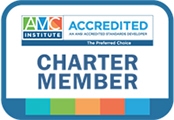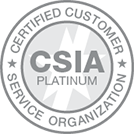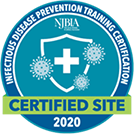Blog
March 28, 2025
Check out these practical suggestions for promoting better collaboration and communication among association chapters, and between the chapters and the central office.
- Group chapters by size instead of geography, to build supportive networks.
Chapters of similar sizes are more likely to share common challenges than geographic neighbors. For example, a large chapter and a small chapter will have different issues with peer-to-peer mentoring, information sharing, leadership calls, and in-person and virtual programming due to numbers alone. But grouped with similarly sized chapters, they have better opportunities for collaboration and problem solving.
- Hire a professional staff.
Board and regional directors and volunteers are sometimes expected to serve as association management consultants. Despite all their contributions to the association, the directors and volunteers are professionals in their industry, not association management, and they can get stymied by unfamiliar challenges. Instead, associations should leverage the expertise of a dedicated staff to support and guide both the organization and its chapters.
- Automate, automate, automate.
A robust chapter structure can mean that certain administrative activities exponentially increase, such as dues collection and event registrations. While a national staff resource can be helpful, the automation of some processes can alleviate even more of the burden. As a result, chapter volunteers can focus on more engaging activities and the volunteer experience becomes more rewarding.
- Provide tools and resources for chapter leaders.
As experienced volunteers cycle out and new ones cycle in, knowledge can be lost. Establish a system to store and update chapter volunteer resources on the association’s website, and regularly communicate available resources to volunteers.
- Offer resources in a variety of formats.
Strong volunteers create successful associations, but they need proper training. Provide a variety of resources and training opportunities such as recorded/live webinars, playbooks, and checklists to best meet individual learning styles. Training materials could include association board and committee orientation materials. The national organization might conduct orientations for new volunteer leaders.
- Bring everyone together one to two times a year for training and information sharing.
The more sharing, the better! Sharing can be done at conferences or stand-alone training meetings.
- Build a brand.
Branding is important to members’ perception of an association chapter or larger association. Branding should have enforced guidelines to ensure consistency, which means providing branded collateral materials such as logos, email headers, website banners, and social media images.
- Think metrics and compliance.
Pull monthly membership reports so each chapter can see its performance as it relates to the rest of the organization. Training for administrators will ease access and increase reporting confidence. If the association issues an annual report, chapters should file with their state of incorporation or their own IRS Form 990. To maintain consistency, compliance requirements should be communicated often. Ensure staff has verified proper filing of Form 990s and annual reports to maintain the proper tax exempt and incorporation statuses.
- Consider education and content.
An association board should always consider education and content strategies. The message should be consistent across all chapters in all areas. One way to ensure this consistency is to include chapter education in a portfolio review exercise.
- Involve the chapters.
Engage chapter leaders in discussions on issues that impact them before any decisions are made by the national board. This can go a long way toward building and strengthening relationships between the larger organization and its chapters.




